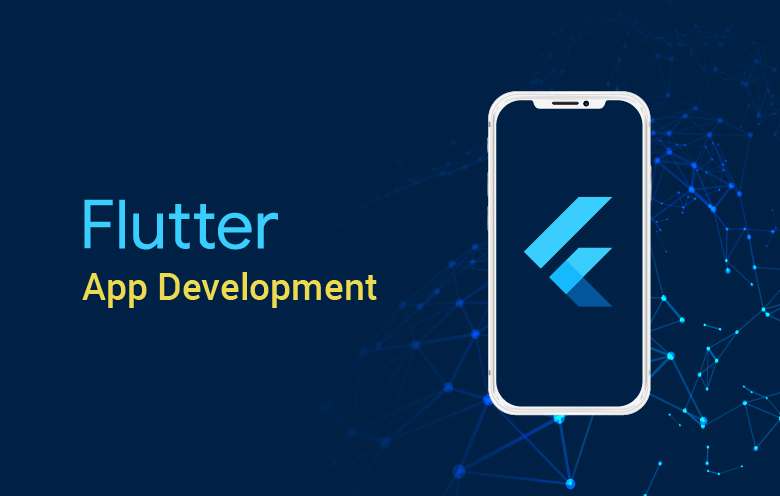Creating Stunning Applications An extensive Guide for Flutter Development
 Hazza institute Of technology
Hazza institute Of technology
Using just one codebase, developers can now create natively built desktop, web, and mobile applications using Flutter, Google's open-source UI toolkit. Because of its large collection of pre-designed widgets, quick development time, and cross-platform compatibility, it is a great option for both new and existing businesses. From setting up your environment to deploying your app, this blog will walk you through the fundamentals of Flutter app development, giving you the skills and resources you need to create stunning, high-performing applications.
Setting Up Your Flutter Development Environment
Setting up your development environment is a must before you begin developing a Flutter project. Installing the Flutter SDK and selecting an Integrated Development Environment (IDE) such as Android Studio or Visual Studio Code should be your first steps. Both IDEs provide strong support for developing Flutter applications, including emulators, debugging tools, and syntax highlighting. This section will walk you through the installation process and help you set up the emulators for iOS and Android so you can construct your first Flutter app with ease.
Understanding the Flutter Architecture
It is essential to learn flutter app development in order to use it properly. Like React, Flutter's architecture is built on a reactive programming style. The Foundation library, the Flutter engine, and widgets make up its three primary levels. Low-level rendering functionality is provided by the C++ Flutter engine through the use of the Skia graphics package. The Foundation library provides necessary services and APIs and is written in Dart. Widgets are the fundamental components that make up a Flutter application's user interface. Understanding this architecture will enable you to create effective applications and take full advantage of Flutter's capabilities.
Creating Your First Flutter App
Building your first Flutter app is an exciting milestone. This section will walk you through the process of creating a basic app, introducing key concepts such as widgets, state management, and navigation. You'll learn how to use stateless and stateful widgets to manage your app's state, navigate between different screens, and handle user inputs. By the end of this section, you'll have a solid understanding of how to build and structure a simple Flutter app, setting the foundation for more complex projects.
Customizing the UI with Flutter Widgets
Flutter's rich library of widgets is one of its standout features. This section will explore various types of widgets, including layout widgets like Container, Row, and Column, styling widgets for custom themes and fonts, and interactive widgets like buttons and forms. You'll learn how to create complex layouts, apply animations, and customize widgets to match your app's design requirements. Mastering these widgets allows you to build visually appealing and responsive user interfaces that enhance the overall user experience.
State Management in Flutter
Effective state management is essential for building scalable and maintainable Flutter applications. Flutter provides several state management solutions, each with its strengths. This section will cover popular approaches, such as setState, Provider, Riverpod, Bloc, and Redux. You'll learn how to manage app state, handle asynchronous operations, and ensure your app remains performant as it grows in complexity. Choosing the right state management approach is crucial for maintaining a clean and efficient codebase.
Integrating APIs and Handling Data
Most applications need to communicate with external services or APIs. This section will teach you how to integrate RESTful APIs into your Flutter app, handle network requests using the http package, and parse JSON data. Additionally, we'll cover best practices for error handling and data caching to improve your app's reliability and performance. By the end of this section, you'll be equipped to build apps that interact seamlessly with external data sources, providing a rich user experience.
Testing and Debugging Flutter Apps
Ensuring your app is bug-free and performs well is critical. Flutter provides a comprehensive set of tools for testing and debugging, including unit tests, widget tests, and integration tests. This section will guide you through writing and running tests for your Flutter app, using Flutter DevTools for debugging, and profiling your app to identify performance bottlenecks. Thorough testing and debugging are essential to delivering a smooth and reliable user experience.
Deploying Your Flutter App
Once your app is ready, the next step is deployment. This section covers preparing your app for release, including creating production builds for Android and iOS, signing your app, and optimizing it for performance. You'll also learn about publishing your app to the Google Play Store and Apple App Store, ensuring it reaches your target audience. Proper deployment practices help ensure a smooth launch and positive user reception, crucial for your app's success.
Advanced Flutter Techniques
As you gain confidence in using Flutter, exploring advanced techniques can help enhance your app's functionality and performance. This section will cover building custom widgets, using platform channels to integrate with native code, and leveraging third-party packages and plugins to extend your app's capabilities. Advanced techniques enable you to push the boundaries of what's possible with Flutter, creating more sophisticated and feature-rich applications.
Conclusion
Learning Flutter app development can significantly boost your career as a developer. By understanding the fundamentals, exploring advanced techniques, and continuously learning from real-world examples, you can build beautiful, high-performance applications that delight users. Whether you're developing apps for mobile, web, or desktop, Flutter provides a powerful toolkit to bring your ideas to life.
Subscribe to my newsletter
Read articles from Hazza institute Of technology directly inside your inbox. Subscribe to the newsletter, and don't miss out.
Written by
